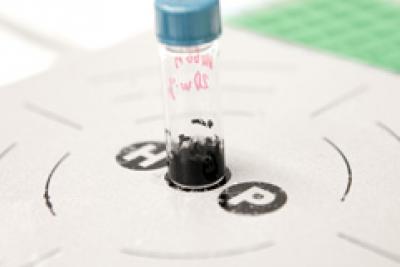Researchers from Aalto University have discovered the ALD method for the manufacture of fuel cells, which needs 60% less of the expensive catalyst when compared to present methods.
 A noble metal nanoparticle catalyst for fuel cells is prepared using atomic layer deposition. This ALD method for manufacturing fuel cells requires 60 per cent less of the costly catalyst than current methods. Credit: Adolfo Vera
A noble metal nanoparticle catalyst for fuel cells is prepared using atomic layer deposition. This ALD method for manufacturing fuel cells requires 60 per cent less of the costly catalyst than current methods. Credit: Adolfo Vera
This is a remarkable discovery especially because scientists were not able to reach savings of this kind previously, with commercially available materials, according to Aalto University, Docent Tanja Kallio.
Fuel cells can substitute polluting combustion engines, which are currently being used. Chemical techniques must be made quicker in a fuel cell by utilizing a catalyst. The increased catalyst price is a major hurdle for widespread fuel cell adoption.
The normally used fuel cells cover the anode with costly noble metal powder that reacts considerably with the fuel. The ALD method enables the cover to have lesser thickness and more uniform in order to reduce cost and maximize quality.
Superior alcohol fuel cells are being developed by researchers utilizing ethanol or methanol as the fuel. It is more convenient to store and handle alcohols when compared to hydrogen. Palladium can also be used as a catalyst in alcohol fuel cells. Platinum is commonly used for hydrogen fuel cells, which is highly expensive when compared to palladium. It is possible to generate electricity with fuel cells that generates minimal or no pollution. These have high-efficiency, make more energy and need lesser fuel when compared to other equal size devices. They are also noise-free, need low maintenance as there are no moving components.
In the coming years, when manufacturing costs can be reduced, fuel cells will drive electric vehicles and substitute batteries. These results are based on initial testing with fuel cell anodes using a palladium catalyst. Commercial production can begin within 5-10 years.